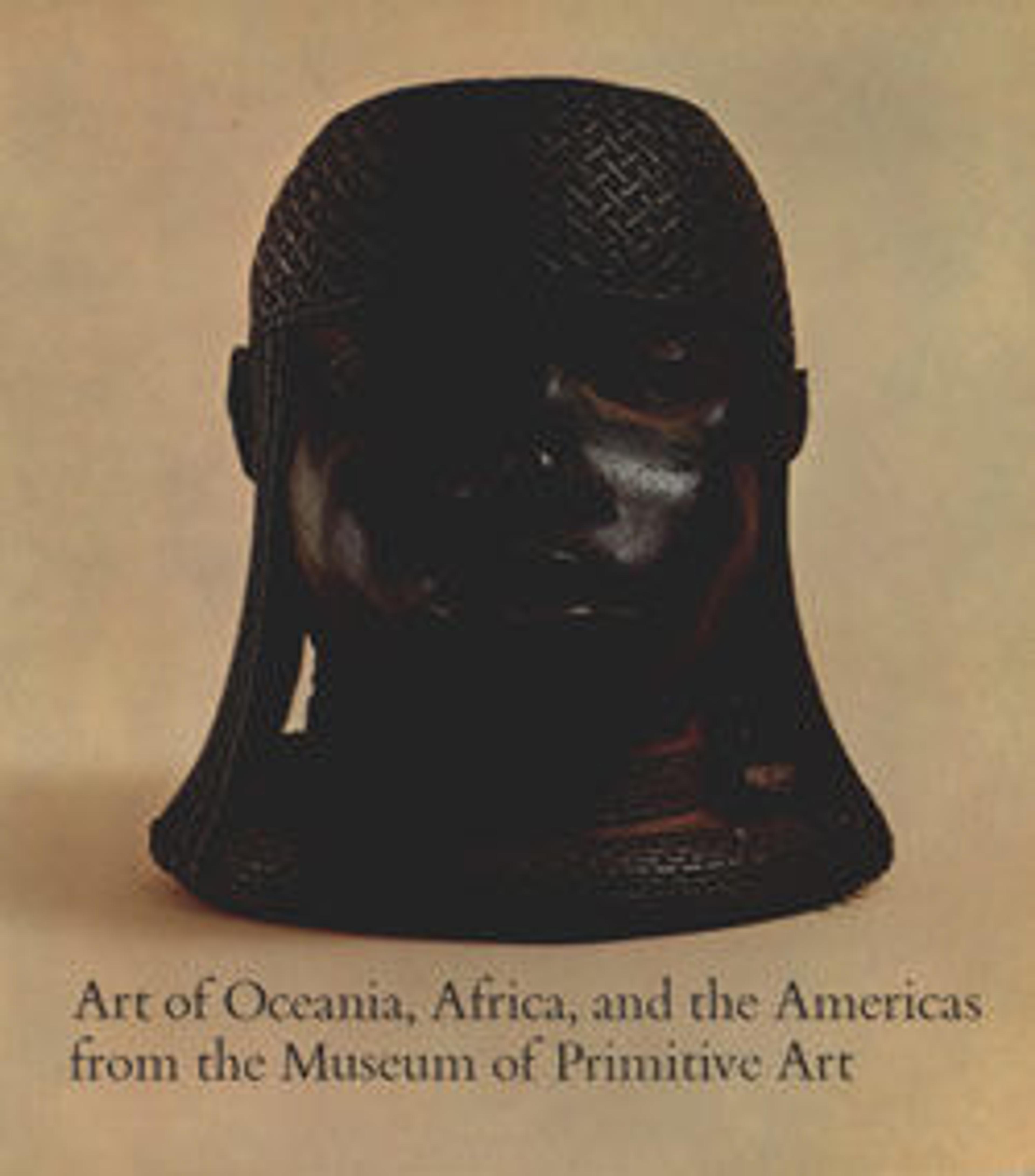Xantil (deity censer)
This effigy censer depicts a seated deity with bent arms and hollow legs drawn up to either side of its cylindrical body. Supported by a long, thick neck, its oversized head features a pair of coarsely modeled ears bearing disc-shaped earspools. The deity’s open mouth exposes a row of teeth bounded by a pair of pointed, jaguar-like incisors at each corner. Atop its cap-like headdress, a crest of tubular representations of feathers extends vertically as a pair of modeled tassels dangles from rosettes along the back portion of the head.
Created in the Tehuacan Valley of the southeast corner of modern-day Puebla, this censer belongs to a class of objects popular among the Eastern Nahua peoples of the Late Postclassic period (ca. 1200–1500). Known as xantiles (sing. xantil), these ceramic braziers functioned as receptacles for a type of incense known as copal (tree resin) that, when burned, produced a thick, musky smoke. Rising through the central chamber of these anthropomorphic vessels, the smoke then billowed forth from holes pierced in the hands, chest, mouth, and nostrils. In this way, the burnt offerings allowed ritual practitioners to communicate with the gods.
The combination of headdress, pendant tassels, rich polychrome and geometric shapes identifies this xantil as the god Xochipilli ("Flower Prince"). A member of the group of deities known as the Macuiltonaleque, or "Five Souls," he was a patron of music, dance, feasting, and sexuality. For additional examples of Xochipilli and other Macuiltonaleque figures in The Metropolitan’s collection, see 00.5.8, 1979.206.368, and 2012.517.2.
William T. Gassaway, 2014–15 Sylvan C. Coleman and Pamela Coleman Fellow
References and Further Reading
Boone, Elizabeth H. Cycles of Time and Meaning in the Mexican Books of Fate. Austin: University of Texas Press, 2007.
Houston, Stephen D., and Karl Taube. "An Archaeology of the Senses: Perception and Cultural Expression in Ancient Mesoamerica." Cambridge Archaeological Journal 10, no. 2 (2000): 261–94.
Houston, Stephen D., David Stuart, and Karl Taube. The Memory of Bones: Body, Being, and Experience among the Classic Maya. Austin: University of Texas Press, 2006.
Milbrath, Susan. "Astronomical Cycles in the Imagery of Codex Borgia 29-46." In Cultural Astronomy in New World Cosmologies, edited by Clive Ruggles and Gary Urton, 157–207. Boulder: University Press of Colorado, 2007.
Nicholson, Henry B. "The Mixteca-Puebla Concept Revisited." In The Art and Iconography of Late Post-Classic Central Mexico: A Conference at Dumbarton Oaks, October 22nd and 23rd, 1977, edited by Elizabeth H. Boone. Washington, D.C.: Dumbarton Oaks, Trustees of Harvard University, 1982.
Pohl, John M. D. Sorcerers of the Fifth Heaven: Nahua Art and Ritual of Ancient Southern Mexico. Princeton, NJ: Princeton University Program in Latin American Studies, 2007.
Created in the Tehuacan Valley of the southeast corner of modern-day Puebla, this censer belongs to a class of objects popular among the Eastern Nahua peoples of the Late Postclassic period (ca. 1200–1500). Known as xantiles (sing. xantil), these ceramic braziers functioned as receptacles for a type of incense known as copal (tree resin) that, when burned, produced a thick, musky smoke. Rising through the central chamber of these anthropomorphic vessels, the smoke then billowed forth from holes pierced in the hands, chest, mouth, and nostrils. In this way, the burnt offerings allowed ritual practitioners to communicate with the gods.
The combination of headdress, pendant tassels, rich polychrome and geometric shapes identifies this xantil as the god Xochipilli ("Flower Prince"). A member of the group of deities known as the Macuiltonaleque, or "Five Souls," he was a patron of music, dance, feasting, and sexuality. For additional examples of Xochipilli and other Macuiltonaleque figures in The Metropolitan’s collection, see 00.5.8, 1979.206.368, and 2012.517.2.
William T. Gassaway, 2014–15 Sylvan C. Coleman and Pamela Coleman Fellow
References and Further Reading
Boone, Elizabeth H. Cycles of Time and Meaning in the Mexican Books of Fate. Austin: University of Texas Press, 2007.
Houston, Stephen D., and Karl Taube. "An Archaeology of the Senses: Perception and Cultural Expression in Ancient Mesoamerica." Cambridge Archaeological Journal 10, no. 2 (2000): 261–94.
Houston, Stephen D., David Stuart, and Karl Taube. The Memory of Bones: Body, Being, and Experience among the Classic Maya. Austin: University of Texas Press, 2006.
Milbrath, Susan. "Astronomical Cycles in the Imagery of Codex Borgia 29-46." In Cultural Astronomy in New World Cosmologies, edited by Clive Ruggles and Gary Urton, 157–207. Boulder: University Press of Colorado, 2007.
Nicholson, Henry B. "The Mixteca-Puebla Concept Revisited." In The Art and Iconography of Late Post-Classic Central Mexico: A Conference at Dumbarton Oaks, October 22nd and 23rd, 1977, edited by Elizabeth H. Boone. Washington, D.C.: Dumbarton Oaks, Trustees of Harvard University, 1982.
Pohl, John M. D. Sorcerers of the Fifth Heaven: Nahua Art and Ritual of Ancient Southern Mexico. Princeton, NJ: Princeton University Program in Latin American Studies, 2007.
Artwork Details
- Title:Xantil (deity censer)
- Artist:Eastern Nahua artist(s)
- Date:1200–1521 CE
- Geography:Mexico, Tehuacan Valley
- Culture:Eastern Nahua
- Medium:Ceramic, slip
- Dimensions:H. 22 5/8 x W. 15 1/8 x D. 9 in. (57.5 x 38.4 x 22.9 cm)
- Classification:Ceramics-Sculpture
- Credit Line:The Michael C. Rockefeller Memorial Collection, Gift of Nelson A. Rockefeller, 1969
- Object Number:1978.412.10
- Curatorial Department: The Michael C. Rockefeller Wing
More Artwork
Research Resources
The Met provides unparalleled resources for research and welcomes an international community of students and scholars. The Met's Open Access API is where creators and researchers can connect to the The Met collection. Open Access data and public domain images are available for unrestricted commercial and noncommercial use without permission or fee.
To request images under copyright and other restrictions, please use this Image Request form.
Feedback
We continue to research and examine historical and cultural context for objects in The Met collection. If you have comments or questions about this object record, please contact us using the form below. The Museum looks forward to receiving your comments.
